Escape route: React Architects align architecture and environment in Paros
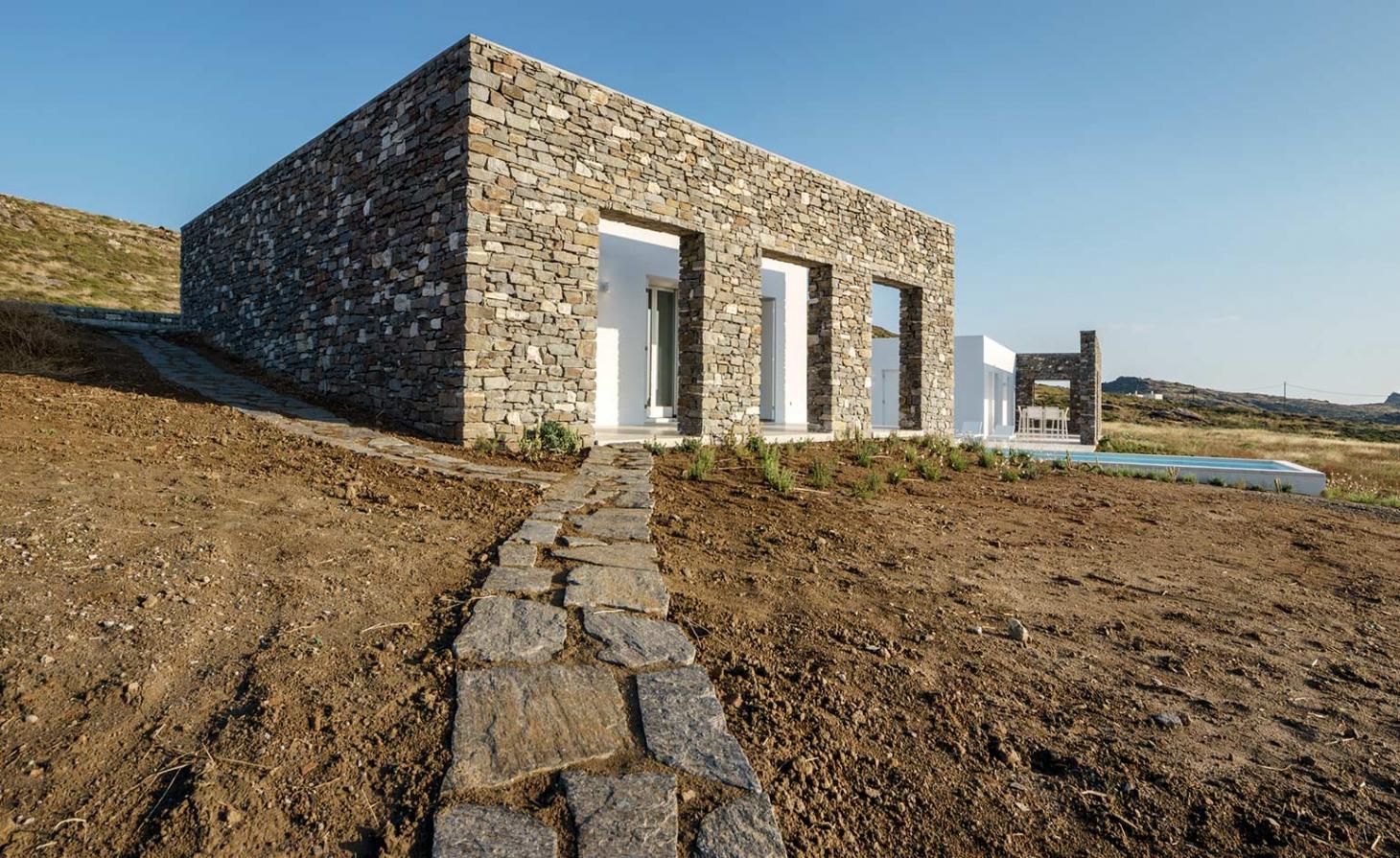
On the island of Paros React Architects have embedded a low-lying house complex with a stone exterior wall into a curved site that slopes down towards the sea. Mindful to preserve the natural beauty of the house’s location in the Agios Ioannis Detis area, a protected stretch of rocky landscape that meets the serene Naoussa Bay, Natasha Deliyianni and Yiorgos Spiridonos, directors of React architects, wanted to leave the smallest possible footprint on the horizon.
The project on the 11,000 sq m site is made up of two houses with white plaster walls, a shared courtyard and swimming pool, all of which is surrounded by a stone exterior wall – enveloping and protecting the inhabited space in what the architects describe as a ‘hug’. The architectural grouping of forms follows the traditional ‘katoikiés’ style of Cycladic architecture, which can also be seen in the plans of monasteries on Paros featuring a church at the centre and satellite buildings all surrounded by an enclosing exterior wall.
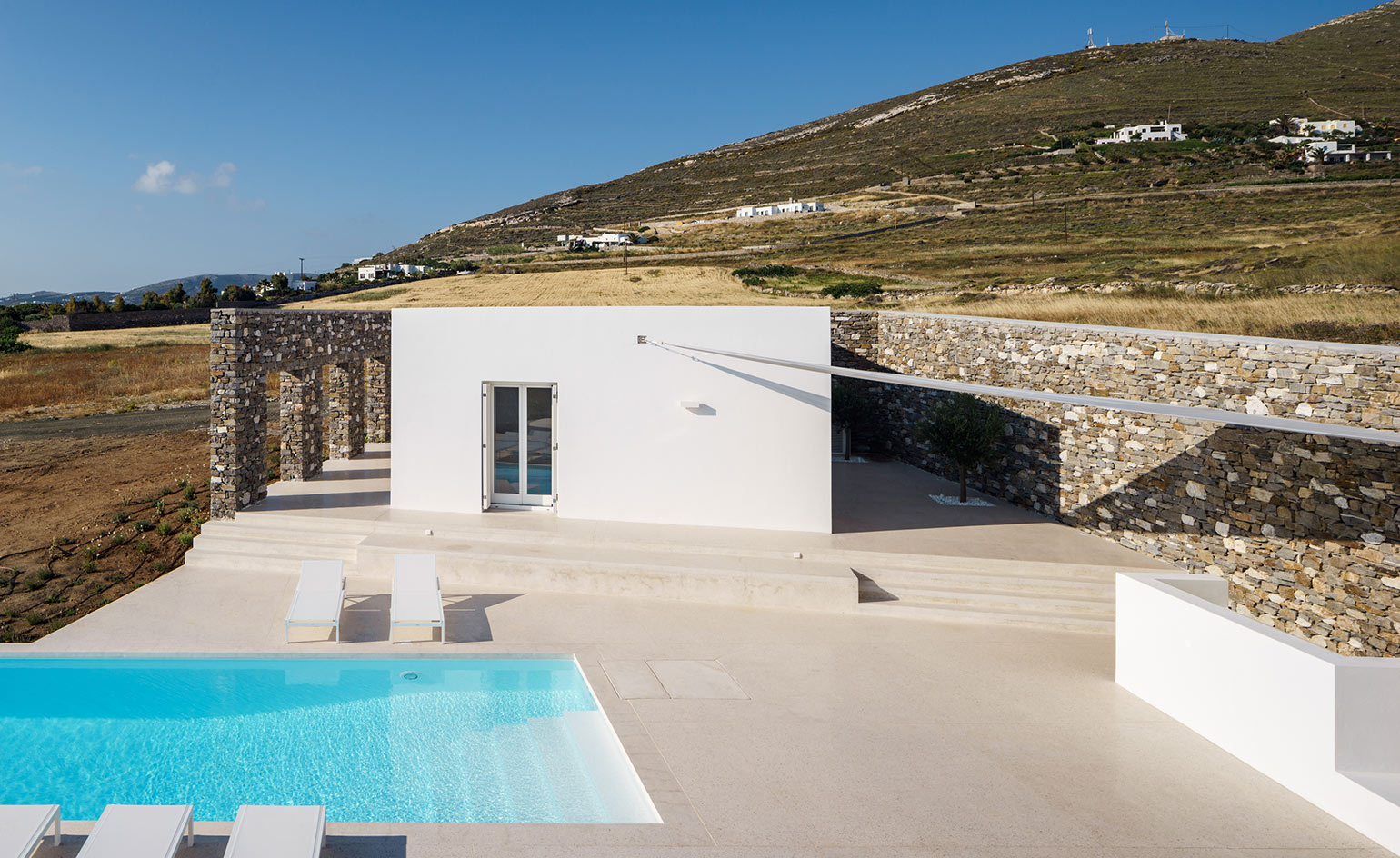
Hug House designed by Athens-based React Architects is landscaped to the terrain of the land in a protected area of natural beauty
Sensitive to the gradual incline of the land, the complex is settled into the natural topography and only the tops of the exterior walls are visible to passersby. The architects chose a stone that was visually similar in colour to the surrounding terrain, and this border is designed so the white walls of the houses can only be seen from the courtyard.
The architecture also works to bring privacy to the relatively exposed site – entry to the house complex is from the highest point of the site, where a pathway descends between two buttressing walls into the heart of the courtyard.
The position of the house in relation to the land, also means that the inhabitants are protected from the strong winds from the north, just another instance of how the React Architects have constructively challenged the symbiotic relationship between the architecture and the environment.
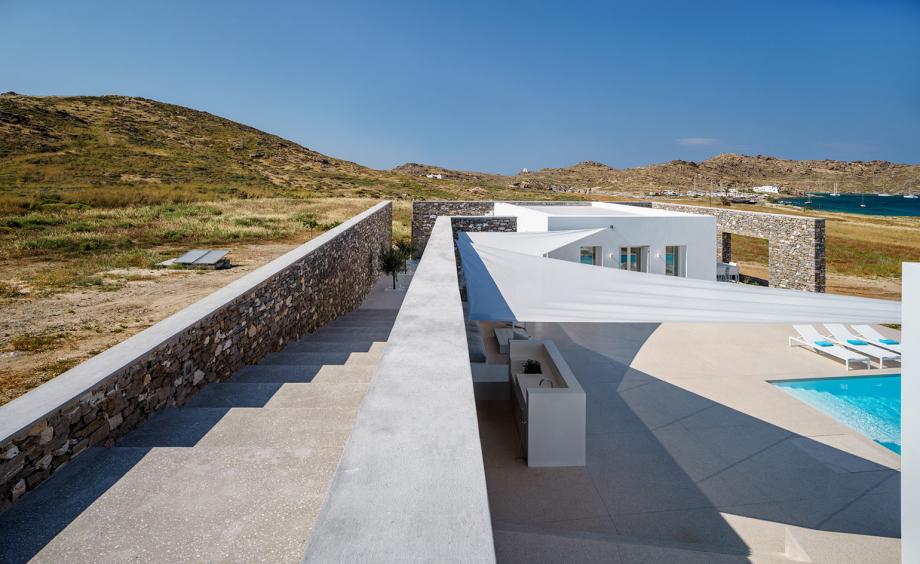
Hug House is named after its exterior stone walls, which wrap the housing complex of two houses, a courtyard and a swimming pool in a protective hug
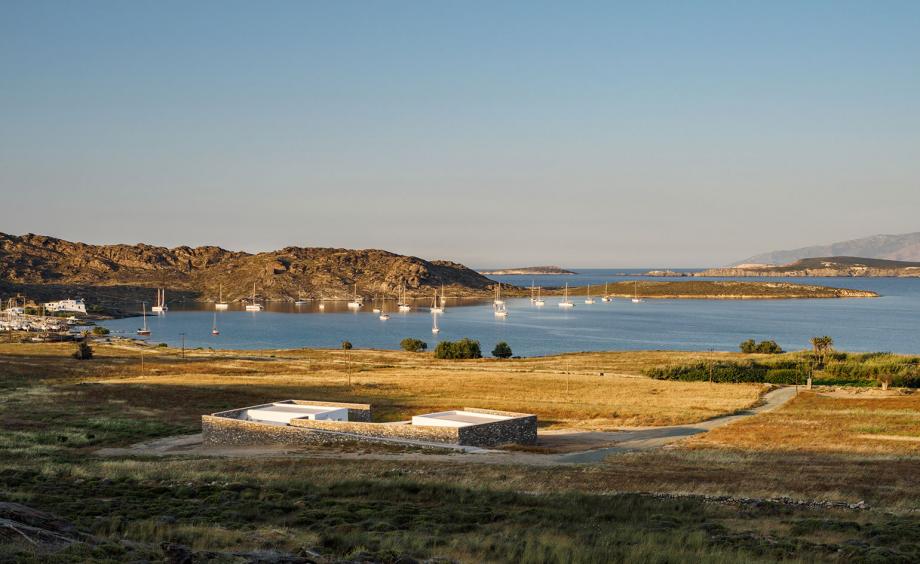
The house is located in the Agios Ioannis Detis area in Paros, a protected stretch of rocky landscape that meets the serene Naoussa Bay in the north west of the island

The swimming pool is positioned between the two single-storey houses
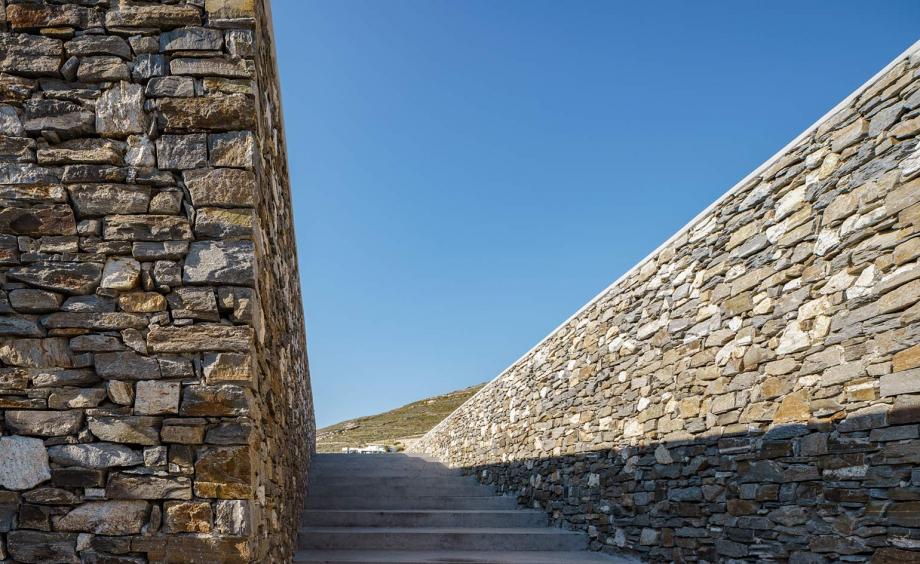
Entry to the site is from the highest point, where a pathway descends to the courtyard between two stone walls
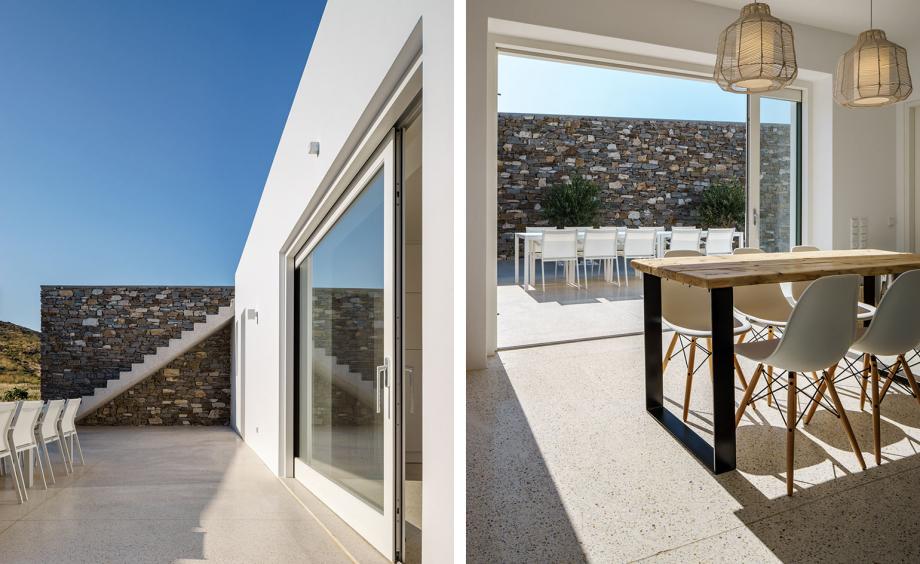
The surrounding stone wall allows the house to be less visible from the exterior, yet also brings privacy to the interior spaces and courtyard, also protecting it from the strong north winds
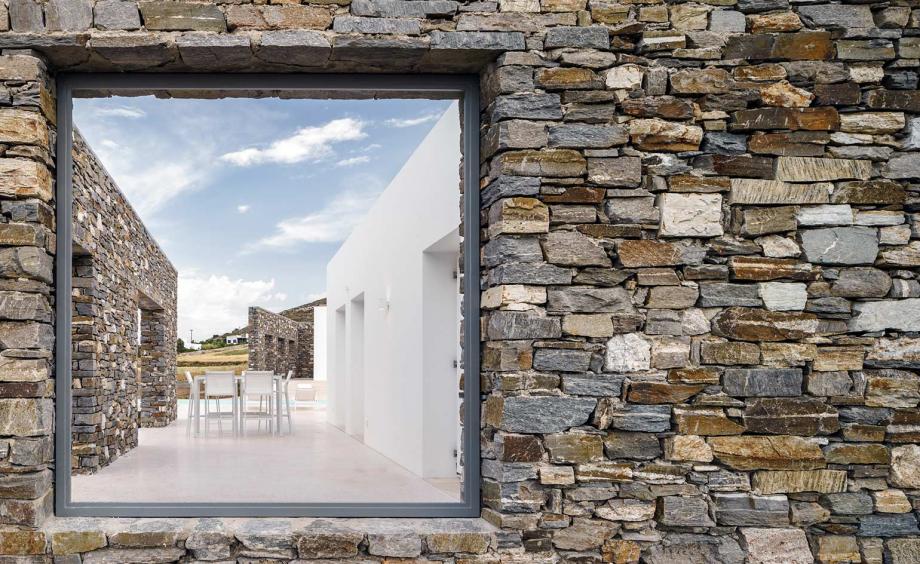
A few square apertures in the exterior wall open up the complex to framed views of the landscape
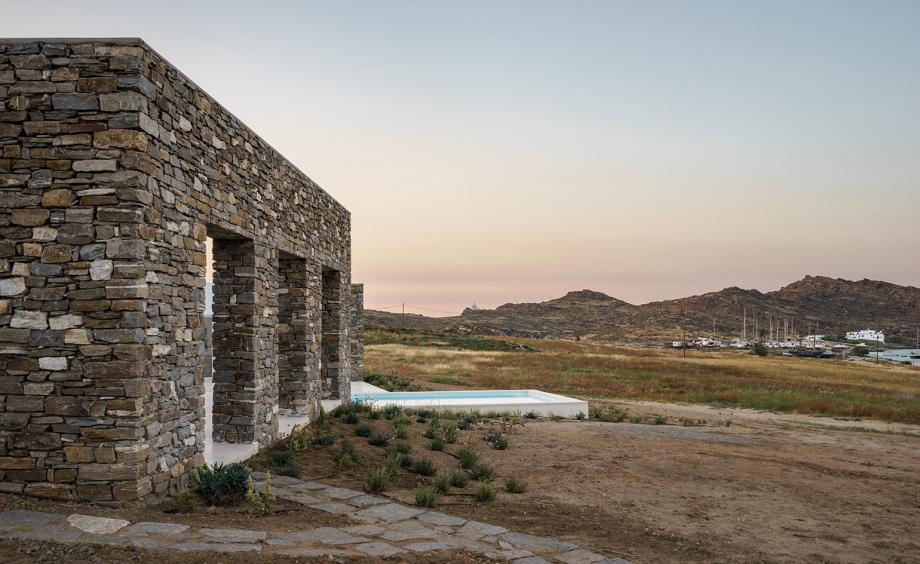
The house is designed to make as little impact on the landscape as possible
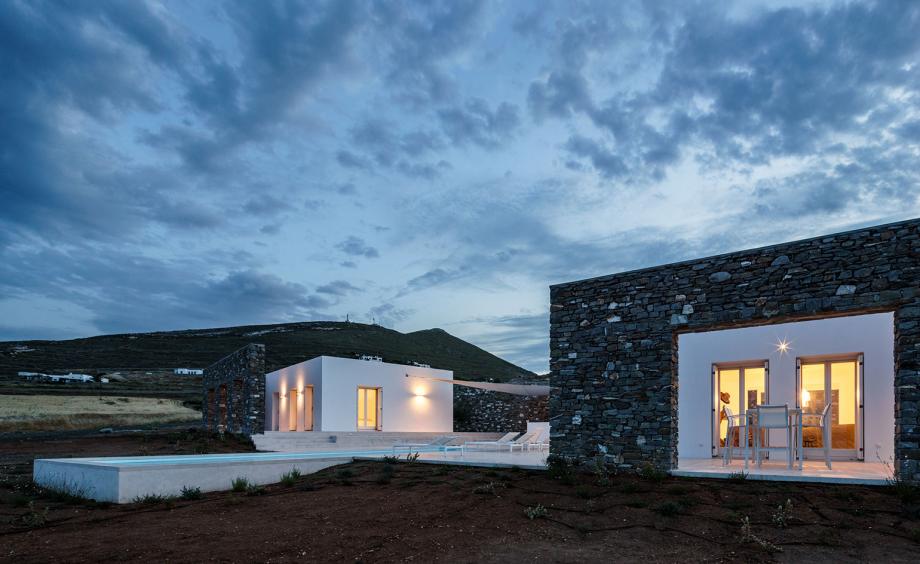
The design of the complex follows the traditional katoikiés style of Cycladic architecture, which can also be seen in the plans of monasteries on Paros
INFORMATION
For more information, visit the React Architects website
Receive our daily digest of inspiration, escapism and design stories from around the world direct to your inbox.
Harriet Thorpe is a writer, journalist and editor covering architecture, design and culture, with particular interest in sustainability, 20th-century architecture and community. After studying History of Art at the School of Oriental and African Studies (SOAS) and Journalism at City University in London, she developed her interest in architecture working at Wallpaper* magazine and today contributes to Wallpaper*, The World of Interiors and Icon magazine, amongst other titles. She is author of The Sustainable City (2022, Hoxton Mini Press), a book about sustainable architecture in London, and the Modern Cambridge Map (2023, Blue Crow Media), a map of 20th-century architecture in Cambridge, the city where she grew up.
-
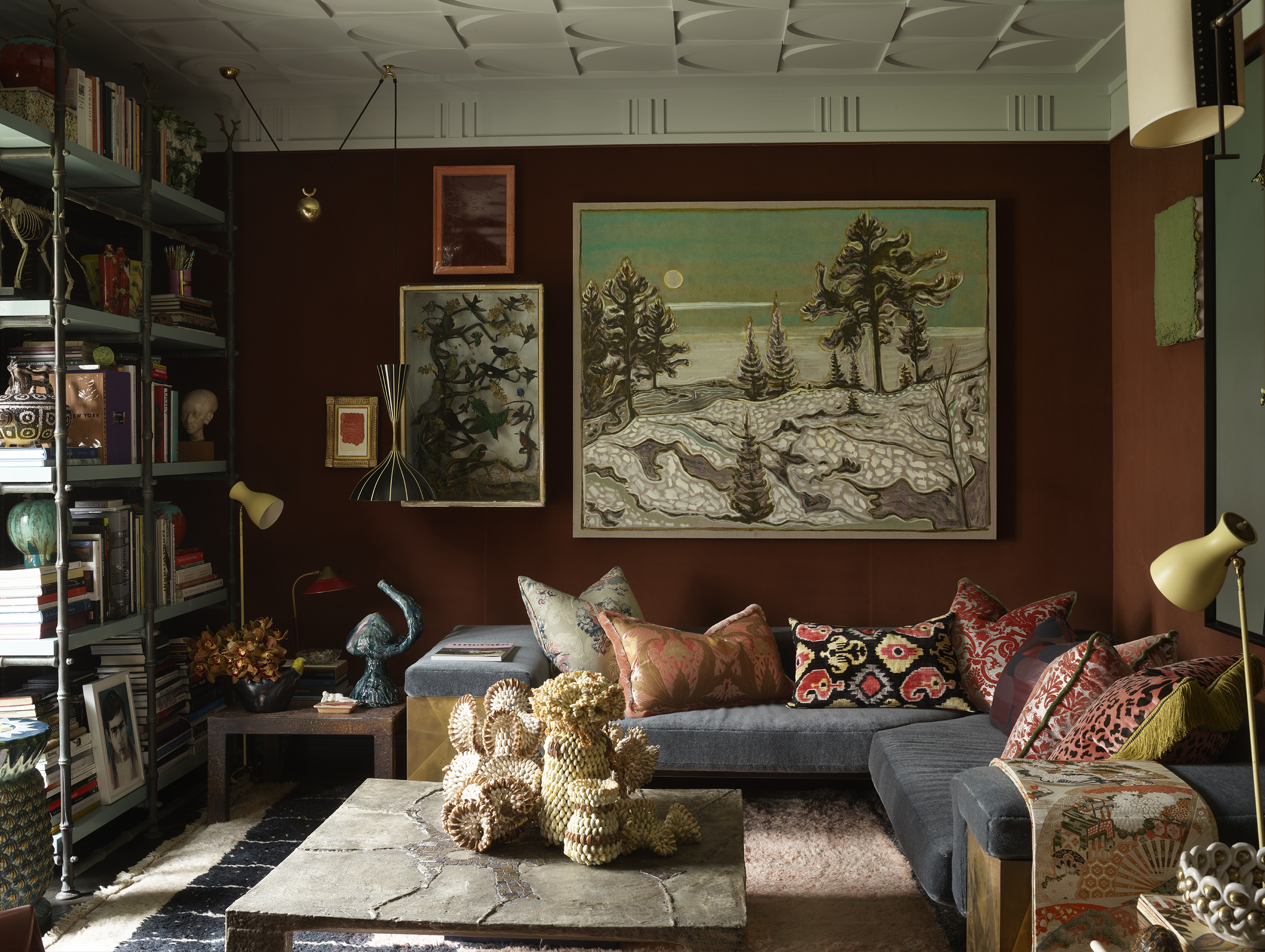 This designer’s Shoreditch apartment is ‘part grotto, part cabinet of curiosities’
This designer’s Shoreditch apartment is ‘part grotto, part cabinet of curiosities’The apartment serves as Hubert Zandberg’s ‘home away from home’, as well as a creative laboratory for his design practice. The result is a layered, eclectic interior infused with his personality
-
 Curvilinear futurism meets subtropical beaches at Not A Hotel’s ZHA-designed Okinawa retreat
Curvilinear futurism meets subtropical beaches at Not A Hotel’s ZHA-designed Okinawa retreatZaha Hadid Architects has revealed the design for the first property in Not A Hotel’s futuristic new Vertex collection, coming soon to southern Japan
-
 Gorden Wagener leaves the helm of Mercedes-Benz design after 28 years with the company
Gorden Wagener leaves the helm of Mercedes-Benz design after 28 years with the companyThe German designer is stepping down from the role of chief design officer at Mercedes-Benz. We look back at his influence and impact on the world of automotive and luxury design
-
 Tour an Athens penthouse – its designers’ own ‘house in the sky’
Tour an Athens penthouse – its designers’ own ‘house in the sky’This penthouse by Block722 is the architecture studio founders' own home and shows off impeccable detailing and dreamy, airy vibes
-
 Explore a refreshed Athens apartment full of quirk and midcentury character
Explore a refreshed Athens apartment full of quirk and midcentury characterA 1960s Athens apartment is revived by architects Aspassia Mitropapa and Christina Iliopoulou, who elegantly brought its midcentury appeal to the 21st century
-
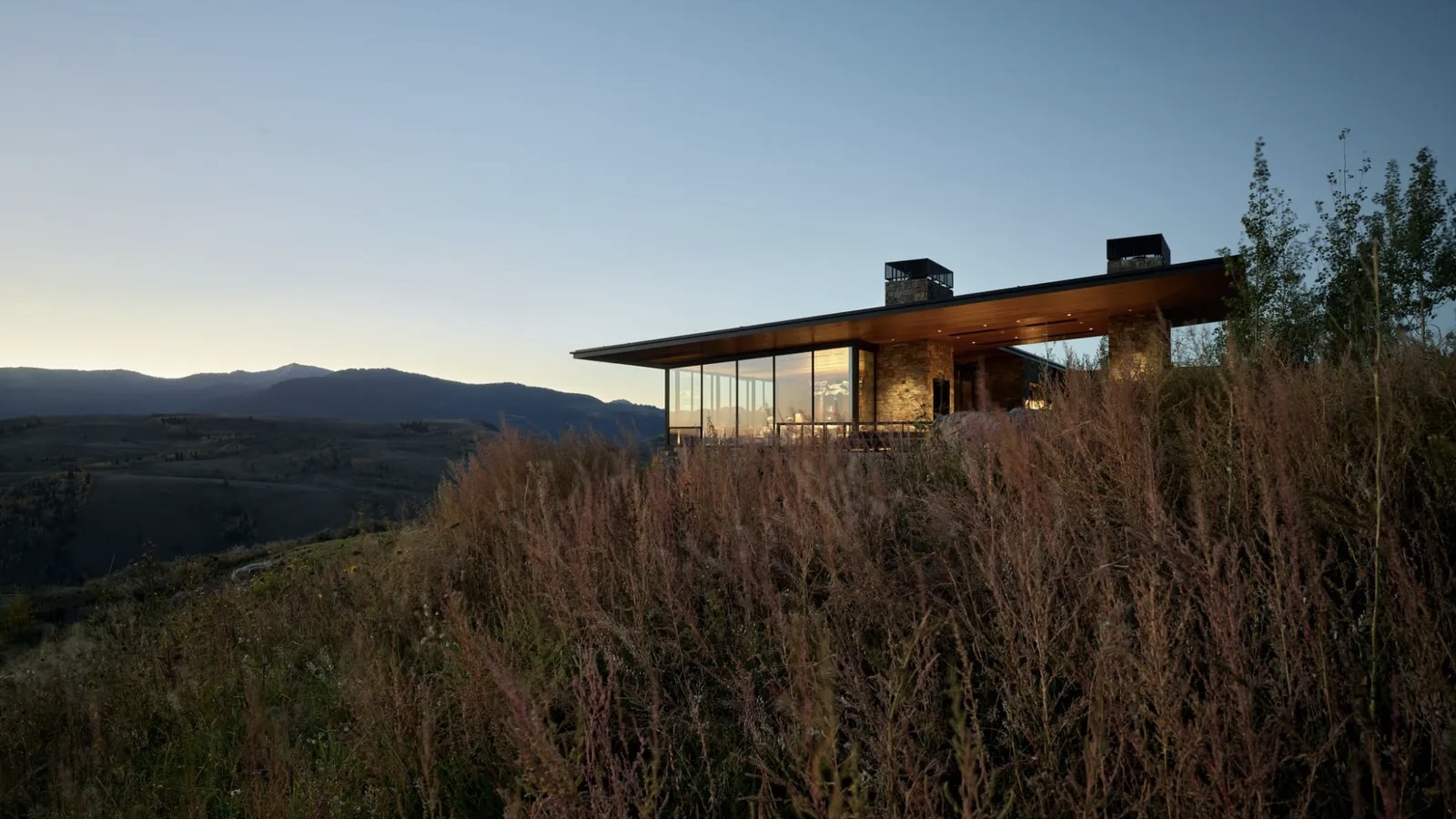 The Architecture Edit: Wallpaper’s favourite July houses
The Architecture Edit: Wallpaper’s favourite July housesFrom geometric Japanese cottages to restored modernist masterpieces, these are the best residential projects to have crossed the architecture desk this month
-
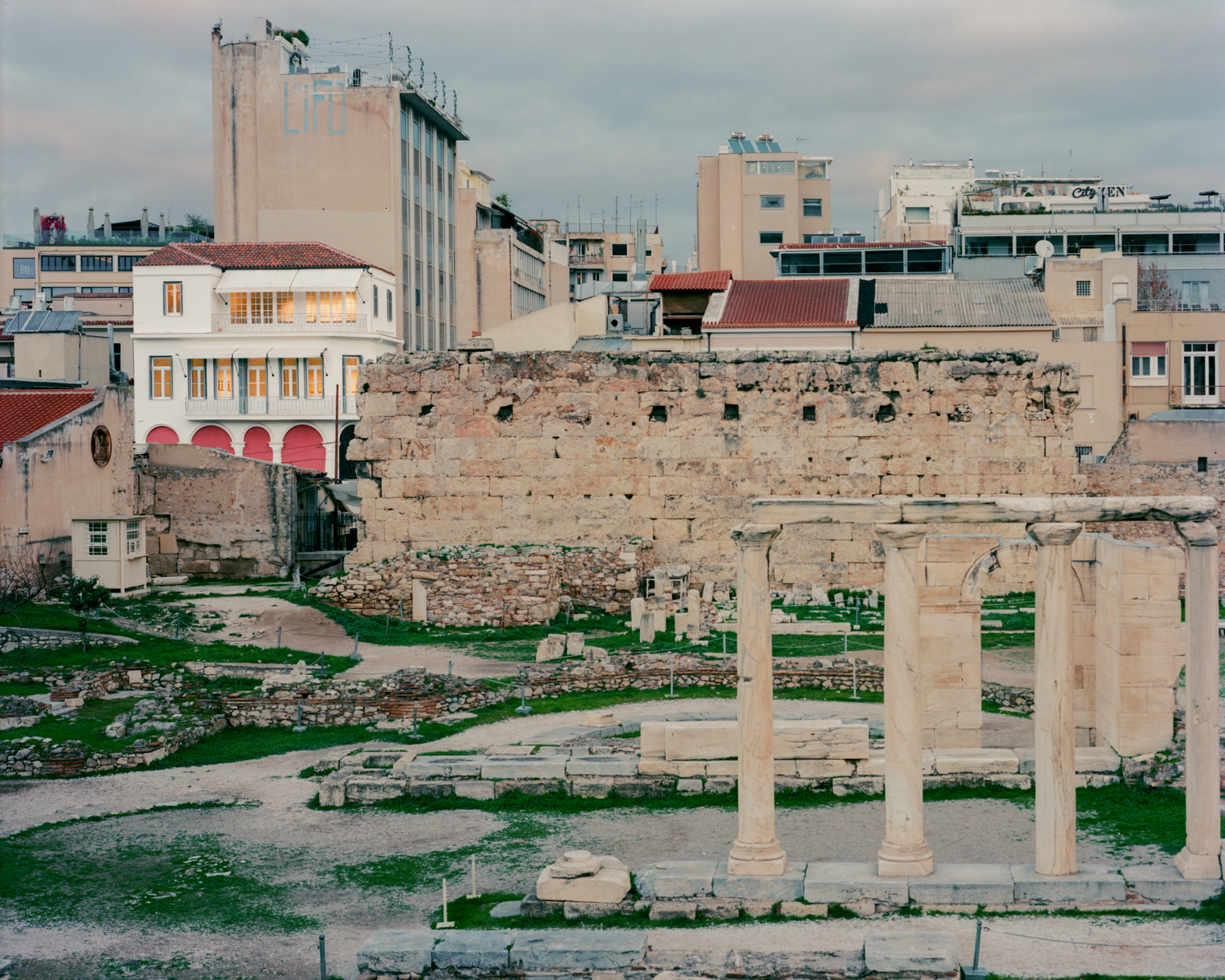 A new Athens gallery is a celebration of old and new, a stone's throw from the Acropolis
A new Athens gallery is a celebration of old and new, a stone's throw from the AcropolisNew Athens gallery Melas Martinos by Local Local is a contemporary art space, a stone's throw from the Acropolis, in the Greek capital's Monastiraki neighbourhood
-
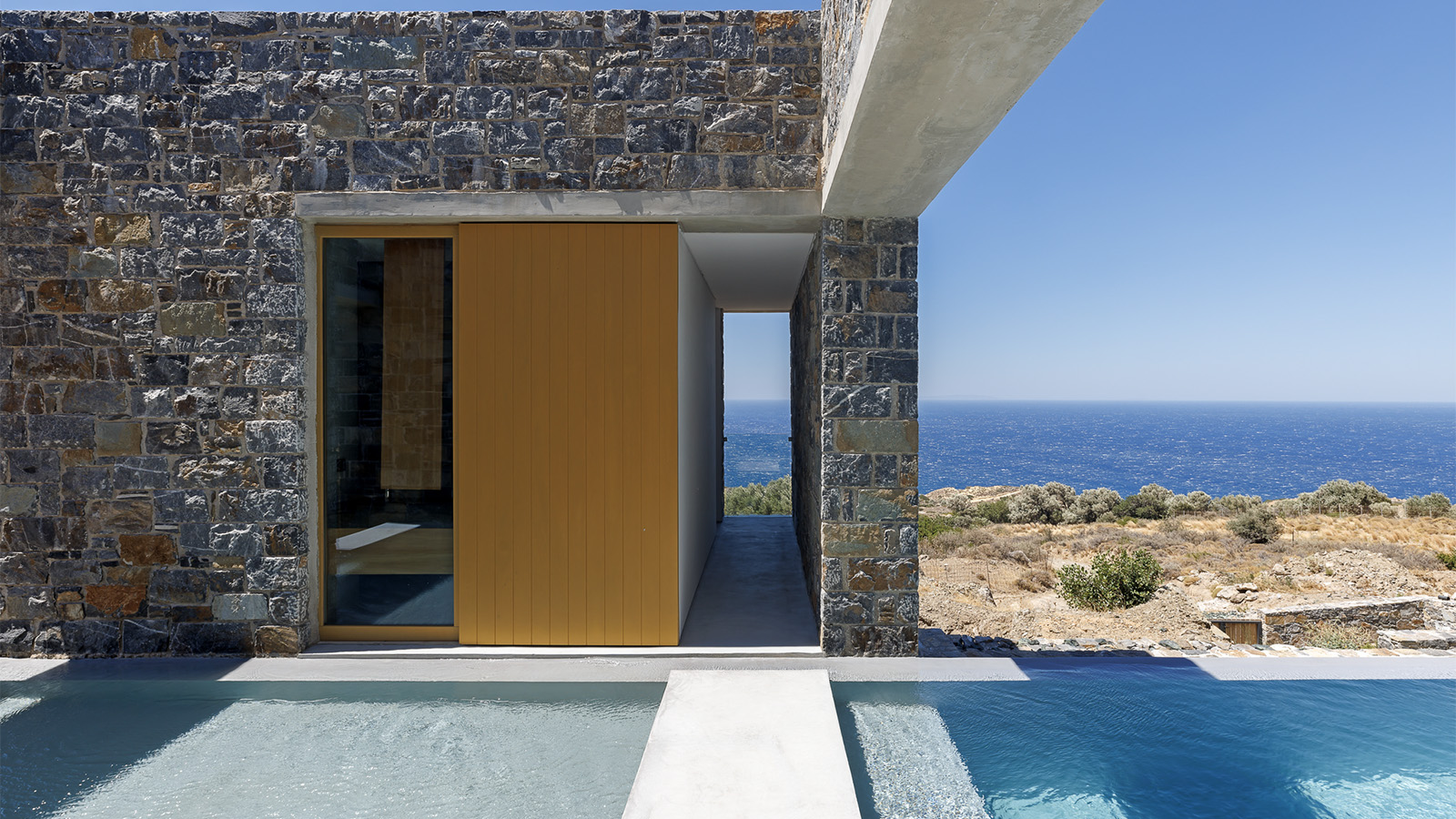 A clifftop Rethymno house tells a story, framing views as far as the Libyan Sea
A clifftop Rethymno house tells a story, framing views as far as the Libyan SeaThis house in the Rethymno region of Crete, designed by architects Gkotsis Serafimidou, is rich in local and natural materials – an oasis at which to disconnect
-
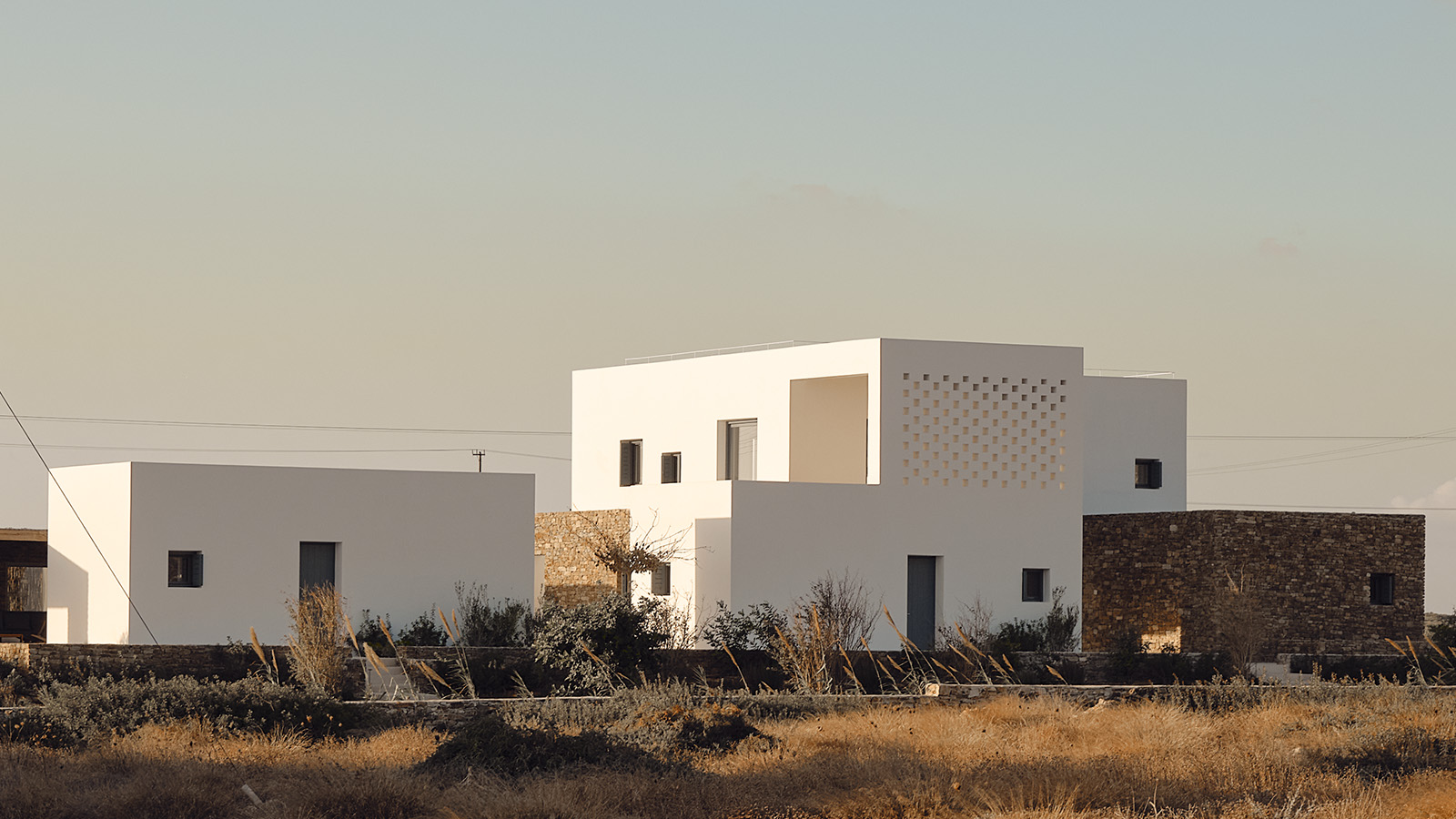 A retro video game is the unlikely inspiration for this island house in Greece
A retro video game is the unlikely inspiration for this island house in GreeceDesigned by ARP, this island house on Antiparos is a contemporary Cycladic home inspired by Tetris
-
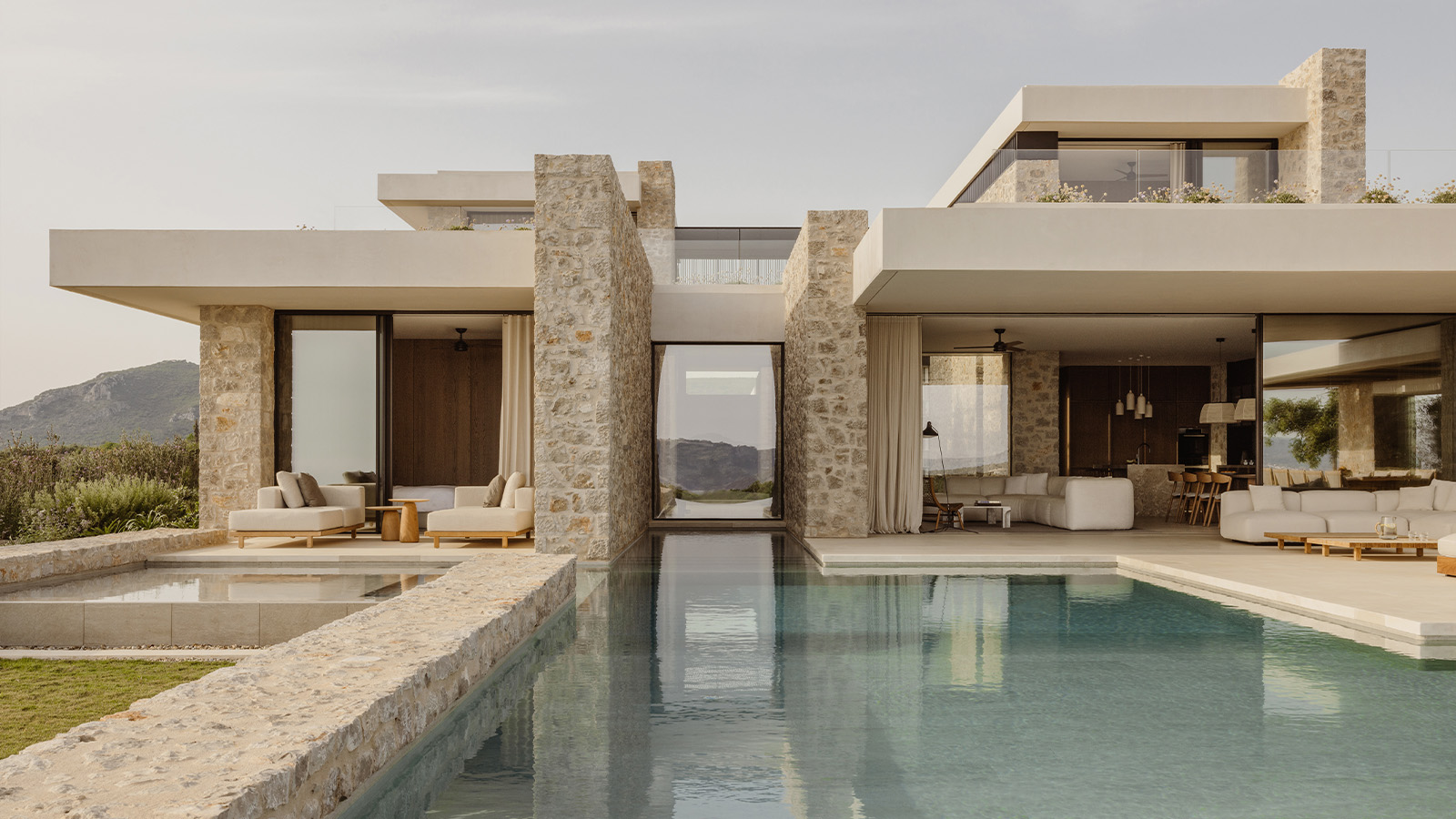 A Costa Navarino house peeks out from amidst olive groves to ocean views
A Costa Navarino house peeks out from amidst olive groves to ocean viewsThis Greek holiday residence designed by K-Studio balances timeless design principles with modernist touches
-
 A breezy Greek island retreat lets the outdoors in
A breezy Greek island retreat lets the outdoors inOpen to the elements, an island retreat in Corfu by Invisible Studio was designed to suit the local climate, using metal mesh screens rather than windows